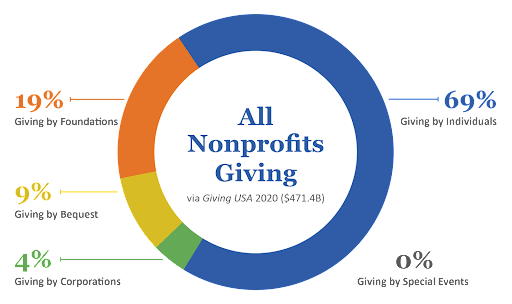Discovering the Diverse Functions and Responsibilities of a Nonprofit Firm in Dealing With Social Issues and Encouraging Modification
Nonprofit companies offer as essential agents of modification within culture, taking on a myriad of social issues with multifaceted approaches. Their responsibilities prolong beyond plain solution provision; they take part in advocacy, resource mobilization, and area outreach, typically working as a bridge between crucial services and marginalized populaces. By fostering partnerships and utilizing culturally relevant methods, these organizations attend to the origin causes of social challenges. Yet, the intricacies of their roles increase crucial inquiries about performance and sustainability. What are the ramifications of these varied features on long-term neighborhood impact?
Understanding Nonprofit Firm Roles
The efficiency of not-for-profit firms rests on a clear understanding of their diverse functions within culture. These companies function as vital middlemans in between the general public, private, and governmental fields, addressing different social problems and promoting for modification. Nonprofit firms commonly operate as company, delivering vital programs and sources to underserved populaces. This duty is important in filling spaces that might exist in public services, guaranteeing that vulnerable teams have access to needed support.
Furthermore, nonprofits play a necessary duty in advocacy, raising recognition and influencing policy decisions that influence their communities. By taking part in research and public education and learning, these companies help form public discussion and promote notified decision-making - nonprofit agency. They also act as platforms for volunteerism, activating area participants to contribute their time and skills towards cumulative goals
Furthermore, nonprofit firms usually function as conveners, bringing together diverse stakeholders to foster collaboration and cumulative influence. This joint method boosts their capability to attend to complicated social concerns successfully. Understanding these complex roles is crucial for maximizing the possibility of nonprofit agencies in producing sustainable social change and improving overall neighborhood wellness.
Area Involvement and Outreach
Efficient area interaction and outreach are essential parts of not-for-profit agencies' strategies to foster connections and develop depend on within the communities they serve. These initiatives concentrate on comprehending area needs, promoting recognition of available resources, and encouraging engagement in programs created to deal with social issues. Nonprofit companies employ a range of approaches to involve with area participants, such as workshops, informational sessions, and collaborative events.
Outreach campaigns offer to enhance connections with varied populaces, specifically marginalized teams who may face barriers to accessibility. By making use of culturally pertinent interaction methods and leveraging neighborhood collaborations, nonprofits can improve their exposure and demonstrate their commitment to area empowerment. This technique not only grows a feeling of belonging yet likewise boosts the chance of continual involvement.
Furthermore, effective area involvement goes past mere engagement; it involves proactively listening to neighborhood members' comments and incorporating their understandings into program growth. This collective procedure guarantees that the services provided are receptive, relevant, and customized to the special obstacles faced by the neighborhood. Inevitably, cultivating solid connections via involvement and outreach can result in more impactful interventions and a better collective initiative toward advertising favorable social change.
Advocacy and Plan Impact
Campaigning for serves as an important mechanism for nonprofit agencies to influence public law and drive systemic modification. By leveraging their expertise and neighborhood insights, these organizations can properly stand for marginalized populaces and address pushing social concerns. Nonprofits participate in campaigning for via numerous techniques, consisting of public understanding campaigns, grassroots mobilization, union building, and straight lobbying of policymakers.
Through these initiatives, nonprofit firms aim to form regulations and plan frameworks that straighten with their goal and the requirements of the communities they serve. They conduct research, gather information, and share compelling narratives to highlight the seriousness of certain concerns, ensuring that decision-makers are educated and inspired to act. This procedure not only intensifies the voices of those impacted by social injustices however additionally promotes an extra inclusive and equitable policymaking atmosphere.
Furthermore, advocacy efforts usually look for to produce long-term structural modifications, resolving root triggers instead of merely relieving signs and symptoms. By focusing on plan influence, nonprofit companies contribute to a more comprehensive understanding of social challenges and advertise solutions that can cause sustainable improvements in social well-being. Inevitably, advocacy is basic to the transformative role nonprofits play in producing a simply and equitable society.
Fundraising and Resource Management
Not-for-profit firms count on durable fundraising and source administration techniques to sustain their campaigning for initiatives and sustain their missions. Effective fundraising is crucial for making sure the accessibility of funds needed to implement programs and tasks that deal with pressing social concerns. This procedure typically involves branching out earnings streams through gives, individual donations, corporate sponsorships, and fundraising events. By using a multi-faceted method, nonprofits can alleviate the dangers connected with reliance on a single financing resource.
Resource administration is equally vital, as it involves the tactical appropriation of both financial and human resources to maximize effect. Nonprofits must develop spending plans that align with their goals while making sure openness and responsibility to stakeholders. This websites involves regular surveillance of expenditures and find readjusting approaches as needed to maximize resource usage.

Collaboration and Partnerships
While numerous organizations seek their objectives independently, cooperation and collaborations can substantially improve the efficiency of not-for-profit companies. By interacting with various other nonprofits, federal government entities, and exclusive sector companies, nonprofits can pool sources, share competence, and enhance their effect on social issues. Joint efforts typically bring about ingenious solutions that might not be possible independently, leveraging the staminas of each companion to attend to complicated challenges.

Ultimately, reliable cooperation needs clear interaction, shared goals, and shared regard amongst companions. By welcoming a cooperative technique, nonprofit firms can create lasting networks that not only address instant social concerns but likewise add to long-term systemic change, promoting a more fair culture. With collaboration, nonprofits can flourish and maximize their capacity for significant effect.
Conclusion
Not-for-profit companies serve as vital entities in cultivating and attending to social issues modification within neighborhoods. Ultimately, the multifaceted roles of nonprofit companies significantly contribute to the search of social justice and the improvement of area well-being.
Recognizing these multifaceted duties see it here is essential for making best use of the capacity of nonprofit firms in producing sustainable social change and improving overall community health.
Effective neighborhood engagement and outreach are essential parts of nonprofit companies' strategies to promote connections and build depend on within the communities they serve. By functioning together with other nonprofits, federal government entities, and personal field organizations, nonprofits can merge sources, share proficiency, and magnify their effect on social problems.Nonprofit firms offer as critical entities in addressing social problems and promoting change within neighborhoods - nonprofit agency. Eventually, the multifaceted functions of not-for-profit firms considerably add to the pursuit of social justice and the improvement of area health